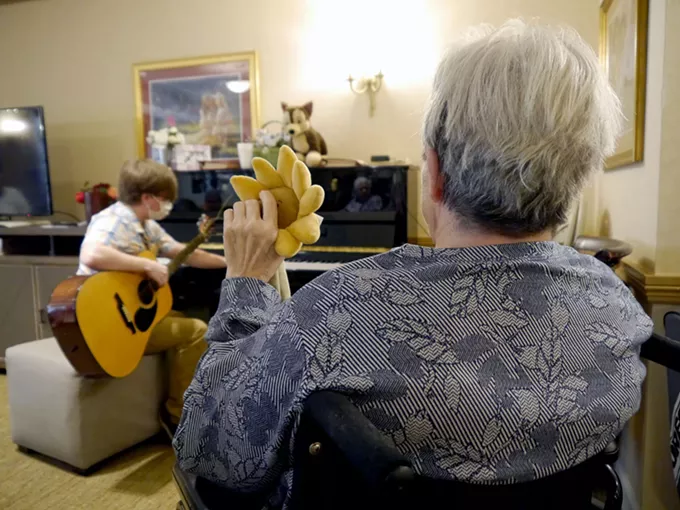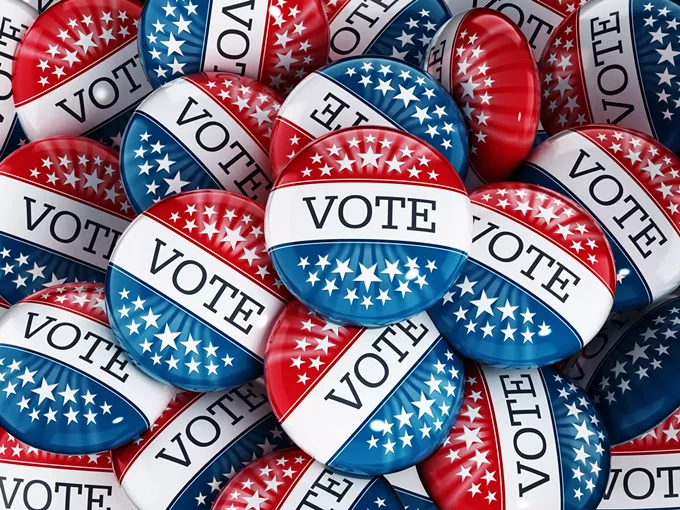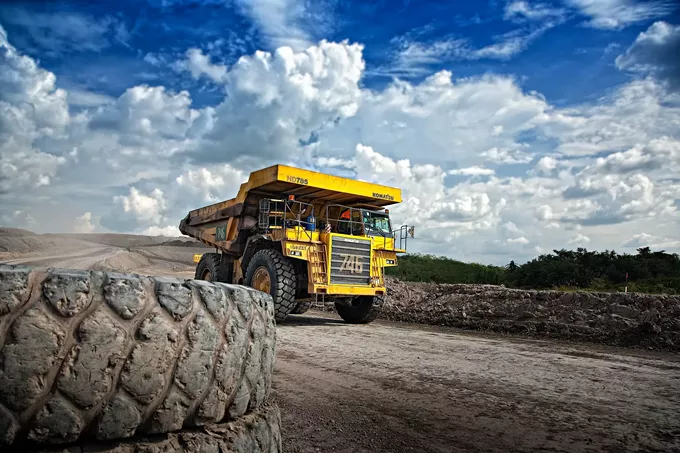Wednesday, May 18, 2022
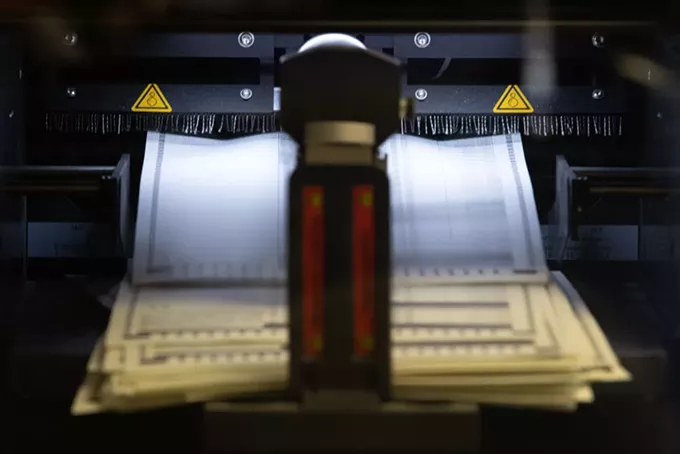
Update May 17, 3 p.m.: The Arizona House voted 50-1-9 this afternoon to pass the bill. It now awaits Gov. Doug Ducey’s signature before becoming law.
Arizona’s largest county, Maricopa, would likely be required to recount all ballots cast in every election moving forward if a proposed change to state law passes.
The bill, awaiting a final vote as early as today in the Arizona Legislature after garnering bipartisan support, would vastly widen the margin of votes between candidates that triggers an automatic recount in primary and general elections, for almost every type of race. The change would prompt more frequent recounts in large and small counties alike. In the 2020 general election, it would have triggered two statewide recounts and two countywide recounts in Maricopa County, including the presidential race which Joe Biden won narrowly in the state.
The stated goal is to build voter confidence in election outcomes in a battleground state where margins are often tight and recounts are currently rarely allowed. State Sen. Michelle Ugenti-Rita, R-Scottsdale, who introduced Senate Bill 1008, says it would still only require recounts on races that are very close.
“Here is an opportunity to help reinforce the process,” Ugenti-Rita said. “To give the voters confidence that, when races are razor tight, we make sure they were counted accurately.”
But national election consultants with expertise in recounts, along with associations representing officials in Arizona counties, warn the proposal may lead to a burdensome number of recounts, add to election costs, delay election results, and make it difficult to meet deadlines between the primary and general elections. They argue that those are heavy tradeoffs considering that recounts almost never change the outcome of elections.
“The bill will increase costs to run elections because counties will be required to hire additional employees, it will create additional wear and tear on machines, and increased potential for delays in canvassing results,” Robin Hillyard of the County Supervisors Association of Arizona wrote to House Minority Leader Rep. Reginald Bolding in March, urging him to vote no on the bill in committee. Both that association and the Arizona Association of Counties oppose the bill. Bolding voted yes.
The last statewide recount, for a proposition in 2010, examined about 1.8 million ballots. It took between one and two weeks, and was “like having a second election,” according to former Secretary of State Ken Bennett. It cost counties a total of $66,237, according to the secretary of state’s office, which estimates that recounts today would cost much more, considering 3.4 million Arizonans cast ballots in 2020.
Ugenti-Rita said the counties’ opposition shows how unwilling they are to make any changes to elections, even those that have bipartisan support and “make the current law better.”
“This is an important bill, and a reasonable bill, and yet they are picking it apart,” she said. “This is exactly why people don’t give a crap about what counties say anymore, because they aren’t willing to make adjustments.”
Historically, across the country, statewide recounts have rarely led to a reversal of results.
In 31 statewide recounts from 2000 to 2019 in the United States, races were reversed three times, according to research from national nonprofit FairVote. Those races all had tiny margins – and all would have already qualified for recounts in Arizona under the current law.
For this reason, the nonprofit recommends Arizona’s existing 0.1 percent margin as a best practice for states, said Deb Otis, senior research analyst.
“It’s already capturing all of the races in which a recount could be consequential,” she said, adding that states with a 0.5 percent trigger can lead to “paying for unnecessary recounts.”
This is an important bill, and a reasonable bill, and yet (county elections officials) are picking it apart. This is exactly why people don’t give a crap about what counties say anymore, because they aren’t willing to make adjustments.
– Sen. Michelle Ugenti-Rita, R-Scottsdale
Some national consultants said that while the increased number of recounts may be burdensome for counties, it may also be the right thing to do to improve voter confidence.
“For Arizona it is a matter of balancing the impact as far as the workload for election officials by increasing the election trigger, balance that with increasing public confidence and transparency and the examination of more ballots,” said Mark Halvorson of Citizens for Election Integrity Minnesota.
The bill is one of more than 100 election-related proposals in the statehouse this year, and represents a broader attempt nationally by Republicans to change election laws following the challenges to the 2020 election.
Some Democratic lawmakers oppose the proposal, saying they see it as another misdirected attempt at changing election law to appease the Stop the Steal crowd when current law is working fine.
Democratic state Sen. Martín Quezada said in a hearing in February that the bill was furthering the narrative that voters can’t have confidence in the election results, and “that’s irresponsible of us as policy makers to continue to further that narrative.”
But unlike most other proposals in the state, this bill has momentum. It was one of less than a dozen election bills to make it through the Senate, passing with all Republicans and one Democrat — Sen. Sean Bowie — voting for it. Then, it flew through the House Government and Elections Committee with a unanimous bipartisan yes vote, including from Bolding.
The bill is scheduled to be heard before the House on Tuesday. Lawmakers could decide to vote on the bill shortly after. If it passes without any changes, it would head to the governor’s desk.
Expanding the threshold for recounts
This is Ugenti-Rita’s second time proposing the bill. Last year, the bill saw broad support but never made it to a final vote.
Gov. Doug Ducey, who would need to sign the bill for it to become law, indicated his support in a tweet last year, stating that it was one of the election-related reforms he wanted to make this year.
Under the proposal, automatic recounts would be triggered if the difference in votes between the winner of the election and the runner-up was less than 0.5 percent of the total votes cast for the two candidates.
Currently, automatic recounts are triggered when the margin between the candidates is the lesser of the following: Either 0.1 percent of the total votes cast for the two candidates, or a set number of votes somewhere between 10 and 200, depending on the race.
For statewide races of more than 25,000 votes or statewide ballot measures, the margin threshold is 200; for statewide races of 25,000 votes or less, the number is 50; for state legislative seats, the number is 50; for county, city, or town positions, the number is 10. These set numbers are often the lesser number, and therefore the determinant in whether the recount happens. They would be eliminated under the proposal.
The law would require the same type of recounts as the current law does: A full machine recount of the race along with, in some state and federal races, a 5 percent hand count of randomly selected ballots.
As an example, under the proposal, if the top two candidates in a state senate race together got 100,000 votes and the winner won by 500 votes or less, the race would be automatically recounted, when the law now says that margin would need to be 50 votes or less.
The proposed margin is still “very, very close,” Ugenti-Rita said.
In the 2020 general election, the presidential race – which Biden won by 10,457 out of about 3.3 million votes cast for him or Trump – had about a 0.3 percent margin and would have been recounted statewide automatically under the proposal.
But so would have the state senate race won by Democrat Sen. Christine Marsh (with a 497-vote margin), and many local races. In Maricopa County, that includes the race won by Republican Recorder Stephen Richer (4,599 vote margin) and Republican Supervisor Jack Sellers (403 vote margin).
Ugenti-Rita said the bill is not aimed at reversing election results. But she did say that Biden’s close margin in Arizona, the closest for the presidential race in the country, “highlighted that there is a lot on the line and when these races are close, it’s a good idea to make sure they are counted accurately.”
Questions about Biden’s win led the Republican leaders of the Senate to order the partisan audit of Maricopa County’s election in which the nearly 2.1 million ballots cast were recounted by hand.
That recount, while criticized for being poorly executed and hyper-partisan, again found that Biden won, and did not change the minds of many voters who still believe the election was stolen from Trump.
There have been five Arizona recounts on state races since 2000, including the one statewide recount of Proposition 112 in 2010, according to the secretary of state’s office.
Recounts would become the norm, increasing election costs
If the bill passes, a preliminary review by Maricopa County found it “is very likely that multiple local and statewide contests would trigger a recount after every primary and general election,” said Megan Gilbertson, Elections Department spokesperson.
The law applies to all races but those for “precinct committeemen, school district governing boards, community college district governing boards, fire district boards or fire district chiefs or secretary-treasurers or boards of other special districts.”
Even if a recount was triggered only for a small city election — say, El Mirage’s ballot question that saw 17,136 ballots cast in 2020 — the county would need to recount all 2 million or so ballots cast, because ballots are not cast or sorted by precinct or city, and so election workers would have to look at all ballots to find those with the municipal question on them. Most ballots are cast in the mail or at vote centers, which allow voters to vote anywhere in the county.
Maricopa County is still working on cost estimates for the potentially increased number of recounts. The county supervisors association also does not have cost estimates from counties, but Hillyard said “it is expected the bill will increase costs to run elections and additional resources to help cover those costs would be helpful.”
Bolding, the Democratic leader supporting the bill, said he plans to introduce an amendment that would require the state to pay counties for the cost of conducting the recounts. Ugenti-Rita said Monday she had not seen the language, so she could not say whether she would support it.
But she did say she believes it’s unnecessary for the state to appropriate funding for the measure, saying the counties “have plenty of money.”
Ugenti-Rita pointed out that her proposed trigger for an automatic recount is the same as other states.
Alabama, Colorado, Connecticut, Delaware, Florida, New York, and Pennsylvania all have similar triggers, although some vary based on race or have other qualifiers, according to the National Conference of State Legislatures.
In Florida, local recounts have been common since the trigger was put in place in 2001, but statewide recounts have been rare, with just three.
Leon County, Florida, which includes Tallahassee, has done between a half dozen to 10 in that timeframe, said Mark Earley, the county’s supervisor of elections.
In November 2018, it took Leon County four days to conduct a machine recount of the 141,111 ballots cast in three races and two days to conduct a hand recount for two races. The overtime pay cost $13,491 for the machine recount and $15,840 for the hand recount.
The hand count takes time, is stressful, opens the ballots to being mishandled or damaged, opens the process to politics, and always has the potential for fraud, Earley said.
“Everyone has their hand in the cookie jar when elections are most fragile,” he said. “That is not the way to do it.”
But also, he said, he doesn’t see a reason to re-run all ballots through the same machines used the first time.
Florida’s law requires a full machine recount of ballots. It only sometimes requires a hand count to go along with that, if the margin was less than 0.25 percent and if there were enough undervotes or overvotes in the race to change the outcome of the election.
‘Slow and methodical’ is paramount for accuracy
The hand count then only looks at the undervotes and overvotes in the race to determine voter intent. Earley said it makes sense to focus in this way, since you want to catch the ballots that the machines may not have read properly.
He helped the state find what he considers a better way to do audits and recounts, which he said makes sense elsewhere, too. Instead of re-running the ballots through the same machines, Leon County uses Clear Ballot machines, which produce electronic copies of the ballots for later analysis, to scan and read ballots immediately after the election.
Those results can then be compared with the original results under the required audit the county must do, and the images are already available for the recount and to quickly find overvotes and undervotes that need to be evaluated for the hand count.
Bennett, the former secretary of state who was also the liaison to last year’s Senate review of Maricopa County’s election, said he thinks using Clear Ballot, or some other electronic ballot review system, would be smart in Arizona if recounts are going to become more common.
Bennett said that he sees the need to create a standard percentage threshold that determines the trigger, rather than have a number such as 10 to 200. But he would be wary of a law that would require frequent recounts.
In 2010, the recounted ballot measure had passed by 126 votes, Bennett recalled, and after recounting all the ballots by machine, the results changed by only 12 votes.
Election consultants say that there are other ways of increasing voter confidence that aren’t as burdensome or costly for local election officials, such as strengthening post-election audits or focusing recounts on looking more closely at voter intent.
Halvorson in Minnesota and others recommend hand counts for recounts instead of simply running the ballots through the same machines again.
Jennifer Morrell of The Elections Group, a national elections consulting firm, said Arizona’s recount bill should be considered hand-in-hand with its existing audit law.
Arizona’s audit law is strong in that it requires a hand count of a certain number of ballots, Morrell said, and then if mistakes are found, more ballots are examined, which could eventually lead to a full hand recount.
Morrell said she understands the concerns counties have about doing recounts more frequently, especially the hand-count part. In Colorado, she said, a hand recount of 500 ballots took three days.
“The only way to get it right is to be slow and methodical,” she said.
But, she said, she also understands the desire to increase the threshold for recounts in Arizona, since it may help assure candidates with tight margins that there were no irregularities in counting votes.
“With the growing chorus of candidates not wanting to concede their loss, this has the potential to help with that.”
Jen Fifield is a reporter for Votebeat based in Arizona. Contact Jen at jfifield@votebeat.org.
Friday, May 13, 2022
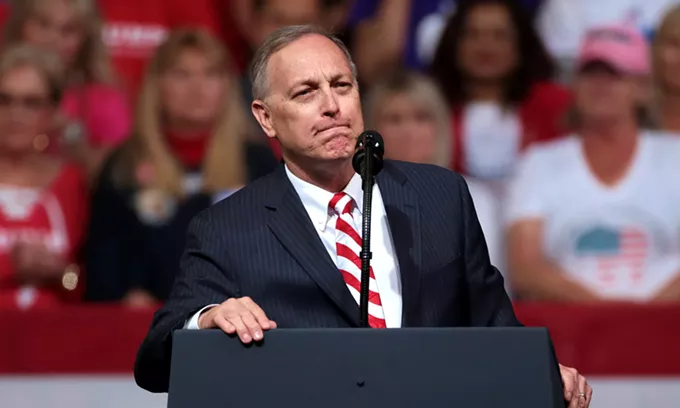
WASHINGTON — The U.S. House committee investigating the Jan. 6, 2021, attack on the Capitol subpoenaed Arizona GOP Rep. Andy Biggs and four other Republican House members Thursday who the panel believes have knowledge of the events leading up to the attack, including communication with then-President Donald Trump.
The Select Committee to Investigate the January 6th Attack on the United States Capitol sent subpoenas to House Republican Leader Kevin McCarthy of California, Andy Biggs of Arizona, Jim Jordan of Ohio, Scott Perry of Pennsylvania and Mo Brooks of Alabama. The Republican members all had been invited to testify voluntarily, committee Chairman Bennie Thompson (D-Miss.), said in a Thursday news release.
Three-paragraph letters Thompson sent to the Republican members Thursday said the committee seeks to respect members’ privacy, but that it is also compelled to seek information relevant to its investigation.
“The Select Committee believes that you have information that is important to its investigation,” the subpoenas read. “Unfortunately, you have declined voluntary cooperation, and we are left with no choice but to issue you this subpoena.”
It is unclear what recourse the committee would have if the members also decline to cooperate with the subpoenas. The panel plans to hold public hearings next month.
McCarthy told reporters on Capitol Hill he did not view the committee’s investigation as legitimate. He did not say whether he planned to comply with the subpoena.
“Look, my view on the committee has not changed,” he said, according to the Capitol Hill press pool. “They’re not conducting a legitimate investigation. It seems as though they just want to go after their political opponents”
House Democratic Leader Steny Hoyer, of Maryland, said the action was not an escalation of the committee’s investigation and didn’t warrant the objections from Republicans.
“I do not understand this extraordinary reaction to pursuing a legal, appropriate process,” he said.
The committee accused Biggs, Jordan, Perry and Brooks of being involved in efforts to overturn the 2020 presidential election. The Jan. 6 attack was spurred by a weeks-long campaign by Trump to nullify Joe Biden’s victory over the sitting president, based on the false claim that the election was illegitimate.
Biggs helped plan efforts to bring protestors to Washington for the counting of the Electoral College vote and was involved in attempts to pressure state officials to overturn the 2020 presidential election.
Jordan communicated with Trump on the day of the attack and had meetings “throughout late 2020 and early 2021 about strategies for overturning the 2020 election,” the committee said.
Perry was directly involved with efforts to install Jeffrey Clark as the acting attorney general. Clark was thought to be willing to use the Justice Department to challenge the election results.
Then-Attorney General William Barr resigned in December 2020 rather than take orders from Trump to investigate phony claims of voter fraud. His successor, acting Attorney General Jeffrey Rosen, also declined to investigate those claims, leading Trump loyalists to push for Clark to take over the department.
Perry also talked with the White House about other matters the committee is investigating, including allegations of voter fraud involving voting machines.
The panel’s interest in McCarthy appears focused on his role as a direct contact with Trump during the attack. The Republican leader communicated with Trump and White House staff before, during and immediately after the attack, according to the committee release.
Representatives for Biggs, Jordan and Perry did not return messages seeking comment Thursday.
After this story was published, Biggs issued a statement on Twitter, calling the committee “illegitimate” and saying the subpoena is “pure political theater.”
Jennifer Shutt contributed to this report.
***UPDATED: This story was updated to include Andy Biggs’ comments on Twitter.
A new law barring elections officials from accepting private grants was fueled by conspiracy theories about money donated by Facebook founder Mark Zuckerberg, but no one in Arizona seemed to notice or care that movie star and former California Gov. Arnold Schwarzenegger also gave money to help Maricopa County conduct elections in 2020.
The USC Schwarzenegger Institute sent roughly $42,000 to Maricopa County for the purpose of beefing up temporary staffing for drive-through ballot drop-off locations on Election Day. Schwarzenegger said he wanted to help Maricopa County as well as 30 other counties across the country as a repayment for the kindness he has seen in the U.S. as an immigrant-turned-citizen.
“As someone who has been a fanatic about voting since I became a citizen in 1983, I want every American to have equal access to the right to vote – yes, even the people who voted against me,” he wrote in a September 2020 letter to election officials asking them to apply for his grants.
He noted how a lack of funding — in addition to COVID-19 — caused many polling locations to shut their doors. Fixing that, he said, is a nonpartisan issue. Schwarzenegger is a registered Republican.
Maricopa County received $3 million in grants from Schwarzenegger’s foundation and the Center for Tech and Civic Life, which Zuckerberg and his wife funded, but spent just shy of $2 million, according to a recent report from the Arizona Auditor General. The report also found that there was no wrongdoing or basis for concern over how the money was spent.
Still, the conspiracy theories that CTCL money was used for nefarious purposes drove the Arizona legislature last year to ban elections officials in the future from accepting private grants to pay for elections operations.
All of the legislative debate around House Bill 2569 in 2021, sponsored by fake Donald Trump elector and state Rep. Jake Hoffman, centered on CTCL grants. Schwarzenegger’s funding was never mentioned.
That’s notable because, even though CTCL provided more funding, only Schwarzenegger’s was targeted for specific uses, as first noted by Votebeat’s Jessica Huseman.
Huseman pointed out that there are legitimate issues surrounding private grant funding for elections and provide a reason to ban them entirely — as Arizona did — which highlight the real issue of underfunding the election programs. But the money from CTCL was spent in the way that counties saw fit. Schwarzenegger’s grants could only be used to open polling locations.
“Unlike Zuckerberg’s $400 million, Schwarzenegger’s money — which came in at just under $2.5 million — was doled out in response to years of progressive advocacy around polling closures affecting communities of color,” Huseman wrote. “He distributed the money only in states that, because of a history of racial discrimination in voting, were formerly required under the Voting Rights Act to seek permission from the Department of Justice for polling place reductions and voting changes. The Supreme Court struck down that requirement in a 2013 decision, Shelby County v. Holder, prompting an outcry.”
A day before Election Day, Schwarzenegger called then-recorder Adrian Fontes and fellow county elections officials to discuss the importance of what he was doing.
Between complimenting each other for advancing democracy, Schwarzenegger talked about becoming an American citizen in 1983 and getting the opportunity to vote for the first time.
“This is why I’m kind of a fanatic about the subject of voting and making sure that everyone has a chance to vote,” he said, before talking about how well Maricopa County was handling early voting with drop boxes.
“I play the action heroes in a movie, but you’re the democracy action heroes,” Schwarzenegger told the county officials on the line. “You’re really fighting to make sure that everyone’s voice is being heard.”
Maricopa County spent the Institute’s money on 13 of its 15 drive-through ballot drop-off locations, which included many sports venues like the Cardinals’ State Farm Stadium in Glendale and seven Cactus League stadiums, ranging from Surprise to Mesa.
After the call on Nov. 2, Fontes tweeted his thanks to Schwarzenegger, who responded that Fontes is a “a democracy action hero.”
Fontes lost his re-election bid to Stephen Richer, a Republican, and is now seeking the Democratic nomination for Arizona Secretary of State.
When Gov. Doug Ducey signed the bill in April 2021, only days before the Senate’s “audit” began at Veterans Memorial Coliseum, he said he didn’t see a problem with third-party groups engaging in advocacy to encourage people to vote.
“But the mechanics of elections cannot be in question, and, therefore, all third-party money must be excluded going forward to avoid any possible allegations of wrongdoing,” he said.
Jovan Pulitzer’s fraud claims are ‘utter rubbish,’ fellow ‘audit’ researcher told the Arizona Senate
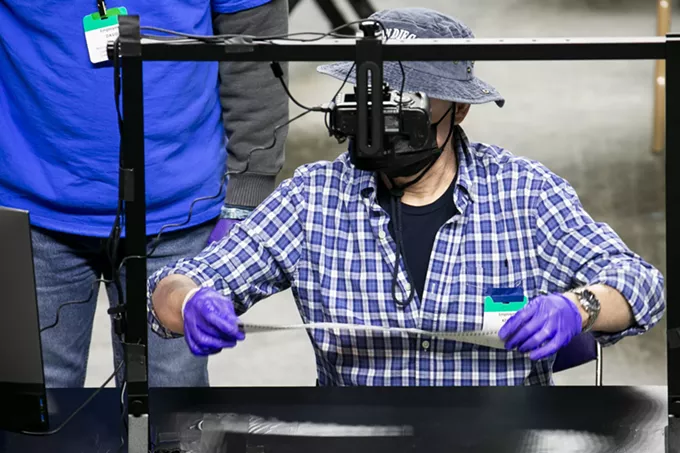
A researcher the Arizona Senate hired to double-check an analysis of ballots by election conspiracy theorist Jovan Pulitzer said his claims that there were upwards of 12,000 counterfeit ballots were “utter rubbish.”
A trove of newly released documents related to the Arizona Senate’s partisan review of the 2020 presidential election shows that EchoMail CEO Shiva Ayyadurai was hired to review Pulitzer’s work. Pulitzer, an election conspiracy theorist known best for an “invention” dubbed “kinematic artifact detection,” has built a rabid following in the election fraud conspiracy world even though he has no background in election work.
“Per your request, I spent time reviewing the nonsense,” Ayyadurai wrote in an email to Senate President Karen Fann and Randy Pullen, one of Fann’s liaisons to the so-called “audit.” “It was painful to read this utter rubbish.”
Pulitzer was hired by the Florida-based firm Cyber Ninjas to work on the Senate’s partisan election review. Cyber Ninjas, which had no experience in analyzing elections and was run by a man who spread baseless claims of election fraud and tried to overturn the election, was empowered to hire whomever it wanted without Senate approval.
Ayyadurai slammed Pulitzer’s work, saying that Pulitzer should face criminal investigation for “fraud” and recommending that the Senate not publish the report.
“It is filled with blatant prevarications that demand either a full blown criminal investigation of fraud of the author of this rubbish or at minimum complete disassociation from him to ensure integrity of the election integrity efforts and to honor those who are truly doing the real work to identify real problems,” Ayyadurai said in his email to Fann and Pullen in February.
Ayyadurai charged the Senate $2,500 for the analysis. The Senate paid that money on top of the $150,000 it agreed to pay Cyber Ninjas.
In his report, Pulitzer alleged that ballots were printed in foreign countries, ballots were counterfeit and that bleed-through caused large-scale problems. All of those accusations have been thoroughly debunked by Maricopa County and independent fact-checkers.
Pulitzer’s company that contracted with Cyber Ninjas was created on the day he signed the contract, according to records from the Utah Corporation Commission.
In January, Pulitzer threatened possible legal action against the Senate, alleging that it had infringed on his intellectual copyrights by sharing ballot images with Ayyadurai.
“It is our firm belief the transfer of these images to outside or other parties will compromise our Intellectual Property and would surely make up ‘willful infringement’ and the damages would easily be over $3,000,000 (since we severely discounted our services being used in the Arizona audit),” Pulitzer said in his email to Fann and others.
Pulitzer further went on to say that, by hiring Ayyadurai to inspect his work, Fann and others were helping to “fuel Arizona’s citizens’ distrust” of the Senate’s election review.
Pulitzer in turn sought access to the materials that were given to Ayyadurai for his flawed evaluation of early ballot envelopes, and complained when they weren’t turned over to him.
“For months we have been asking for some number confirmations regarding ‘envelopes found with no signatures’ by Dr. Shiva,” Pulitzer said in a January email, referring to Ayyadurai’s findings.
Pulitzer accused the Senate of not turning over the materials because Pullen “hates (Pulitzer’s) guts and is not going to give (him) anything.”
“We do not think it would be appropriate to publish our report that we were denied access due to ‘Randy Pullen hating Jovan’ – we think that would enrage the public when all anyone wants is hard numbers,” Pulitzer said in his email to Fann.
Pulitzer has since publicly turned on the Arizona Senate. On his Twitter and Telegram channels, Pulitzer frequently creates hashtags and publishes photos of Republican senators with derogatory comments, often saying that they are against election integrity.
Lately, Pulitzer has been sharing a meme that includes himself, Fann and Kory Langhofer, the Senate’s attorney. In the meme, Pulitzer is saying there has been no “official debrief” of his report because Langhofer won’t let him give one. Pulitzer has also shared a similar photo of Attorney General Mark Brnovich, calling him a “traitor.”
In the email records, Pulitzer has requested a “debrief” multiple times with Jennifer Wright, an assistant to the attorney general who leads Brnovich’s Election Integrity Unit. Pulitzer has on several occasions sent her reports and “explainer” videos he created related to his work.
“Jennifer, we still need to do a debrief,” Pulitzer said in a March email to Wright. The email was copied to Fann, Flagstaff Republican Sen. Wendy Rogers and Sen. Sonny Borrelli.
Pulitzer originally planned to bill Cyber Ninjas $2.1 million for his work — a fee of $1 per ballot examined — before cutting the price by 90% and charging $210,000.
Ayyadurai claimed in an email that he was never paid his original fee of $50,000 by Cyber Ninjas. Ayyadurai later slammed the “audit” leaders as grifters in a report he issued earlier this year.
Wednesday, May 11, 2022
Democrats in Congress are hoping to overhaul the nation’s 150-year-old system for mining the elements needed for battery manufacturing, as high gas prices and Russia’s war in Ukraine underline the need to transition from oil and gas to renewable energy sources.
U.S. House Natural Resources Chairman Raúl Grijalva of Arizona and U.S. Sen. Martin Heinrich of New Mexico have each sponsored bills that would set environmental and reclamation standards.
Their legislation also would require mining companies to clean up abandoned mines, lease the federal lands they operate on and pay royalties for the revenue from public lands.
Tuesday, the 150th anniversary of President Ulysses S. Grant’s signing of the General Mining Act of 1872, Grijalva, Heinrich and California Democratic Rep. Alan Lowenthal said those bills were necessary to provide an overdue update to the mining law.
“We’re living in a completely different world than we were 150 years ago,” Grijalva said at a press conference.
Under the law, miners have been able to operate “without any semblance of accountability,” Grijalva said.
Grijalva said he didn’t seek to end mining through the legislation. Lowenthal said he and Grijalva opposed new mining, but that the bill concedes the industry’s continuation while attempting to mitigate its harms.
“The transition to a clean-energy future will inevitably involve mining,” Grijalva said. “That’s not the argument we have. But … we cannot build a 21st century clean-energy economy with a 19th century law.”
The legislation seeks to place environmental requirements and financial costs on miners, as well as require consultation with tribes.
New mines would have to pay a 12.5% royalty rate for operations on federal lands. Existing lands would see an 8% royalty rate. One-quarter of that royalty would go to the state where the mine is located.
The remainder would go into a new Hardrock Mine Reclamation Fund, which was created under the $1.2 trillion infrastructure law President Joe Biden signed last year, to clean up abandoned mining sites.
Heinrich said the new dedicated funding stream for abandoned mine cleanup was the most important part of the bill.
Defunct mines can leach chemicals into the nearby water and soil, Heinrich said. He referenced the Gold King Mine wastewater spill in Colorado that turned waters in New Mexico “the color of Tang” because of heavy metals and other contaminants.
The legislation was more urgent because of the recent push to increase domestic energy, Heinrich said. Volatility in the oil and gas market that resulted from the pandemic and Russia’s invasion of Ukraine has spurred calls in Washington to produce more domestic energy.
“Isn’t it time we had a 21st century approach to mining in this country?” he said. “Especially at a moment when we are making increased efforts to create domestic supply.”
Needed for transition
Grijalva said mining would be part of a clean-energy future because metals like copper, lithium and nickel are needed for battery storage, a critical component for electric cars.
Lauren Pagel, the policy director for the environmental group Earthworks, said a transition to “a fully renewable energy future” was needed as soon as possible. Cleaning up mining was essential to reach fully renewable energy, she said.
“We cannot do that on the backs of dirty mining and mining-impacted communities,” she said. “And that’s where we’re headed right now if we don’t reform this.”
Private mining companies have extracted $300 billion of minerals from public lands, without paying royalties and while sticking taxpayers with cleanup bills, Lowenthal said.
“If the federal government is going to allow private companies to extract resources from public lands, the American taxpayer must be compensated,” he said. “Right now they are not being compensated or protected.”
Grijalva has scheduled a hearing on his bill for Thursday at the Energy and Mineral Resources Subcommittee, which Lowenthal chairs. A spokeswoman for the House Natural Resources Committee said the panel would mark it up this year, though a schedule has not been finalized.
Heinrich’s bill has not been scheduling for consideration in the Senate Energy and Natural Resources Committee.
Members of Congress have launched efforts to reform the 1872 law for decades. Heinrich’s predecessor, Democrat Jeff Bingaman, introduced a bill in 2009.
A spokesperson for U.S. House Republicans said they strongly oppose the legislation.
“Mining industries have shown they’re willing to come to the table and talk about bipartisan solutions, but Mr. Grijalva’s legislation is merely a proposal to end all mining in the U.S.,” said Rebekah Hoshik.“That runs directly contrary to the Biden administration’s own clean energy goals, which will require a dramatic increase in mineral production.”
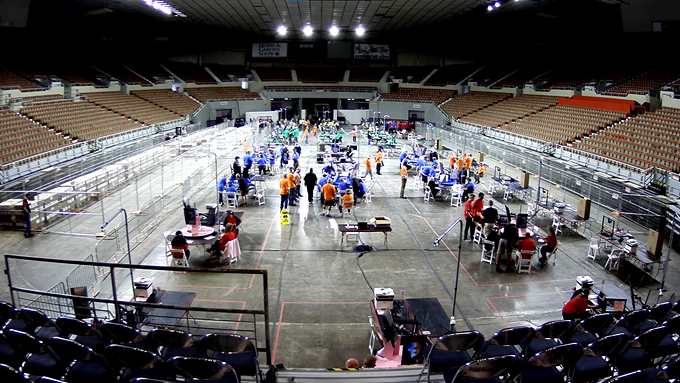
Newly released documents by the watchdog group American Oversight show that the Arizona Senate’s partisan review of the 2020 presidential election in Maricopa County went over its proposed budget and spent more money than it had available to it.
More than a thousand pages of records that were in the possession of Cyber Ninjas, the now-defunct Florida company the Senate hired to do the review, were released as part of an ongoing lawsuit. Until providing these records, Cyber Ninjas has refused to turn over documents, despite court orders to do so — and daily $50,000 fines that now total $4.3 million.
Some of the documents released Tuesday include contracts between Cyber Ninjas and its many subcontractors who worked alongside Cyber Ninjas CEO Doug Logan. The documents offer insights into the scope of work and the amount of money offered to each subcontractor for their work on the so-called “audit.”
Previously, Cyber Ninjas had released some information about the groups who had funneled money into the “audit” effort, which amounted to approximately $5.7 million from pro-Donald Trump groups.
A document prepared by an unnamed independent accountant showed that those funds were not able to cover the operating costs of the audit which came in at approximately $8.8 million, the bulk of which was $5.2 million in payroll and labor. The report cited a loss of more than $2.1 million for Cyber Ninjas, though the accounting firm noted that Logan failed to submit balance sheets, statements of cash flows and other documents ordinarily included in financial statements.
As of Sept. 15, 2021, the accountant’s report also notes that Cyber Ninjas owed “audit” subcontractors more than $1.9 million.
In its original statement of work for the Arizona Senate, Cyber Ninjas stated it would complete the work for $150,000. However, the payments Cyber Ninjas promised its subcontractors would balloon that and costs would quickly go higher from there.
The documents also showed that conspiracy theorist Jovan Hutton Pulitzer originally planned to bill Cyber Ninjas $2.1 million for his work, but offered “deep discounting” to reduce his fee to $210,000. A line item in the operating expense report titled “research/artifacts” is listed as costing $210,000. Pulitzer is known for an “invention” dubbed “kinematic artifact detection.”
One subcontractor, EchoMail, run by Shiva Ayyadurai, claimed in an email that he was never paid. Ayyadurai, who was later hired by the Senate directly to conduct a flawed analysis of early ballot affidavit envelopes, slammed the “audit” leaders as grifters in a report he issued earlier this year.
Earlier this year Logan revealed that Cyber Ninjas had declared bankruptcy and that he’d be attempting to create a new organization with the same employees.
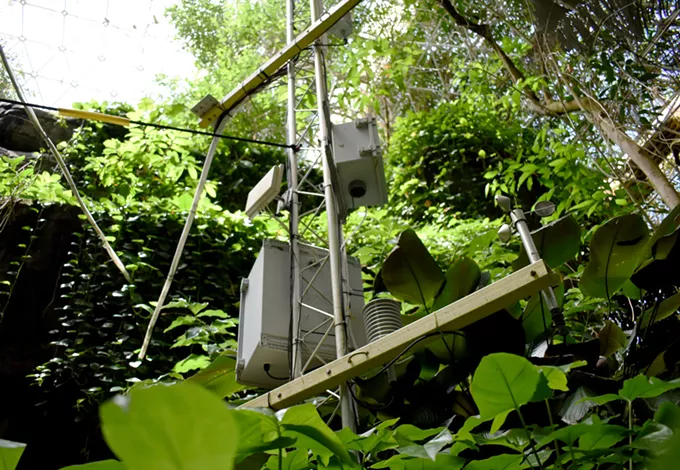
ORACLE – At the foot of Mount Lemmon, down a short, winding road off State Route 77, a tropical rainforest stands inside Biosphere 2, the University of Arizona’s 3-acre environmental laboratory in the Sonoran Desert.
Research in the rainforest
This graphic depicts the total concentration of methane in the atmosphere each decade in parts per billion. Source: United States Environmental Protection Agency, data as of 2019. (Animation by Hope O’Brien/Cronkite News)
Joost van Haren gets excited when talking about methane emissions and how they feed climate change. An assistant professor at UArizona, he’s the co-principal investigator for a project in the Biosphere 2 rainforest designed to determine how much methane is emitted by seasonally flooded areas of the Amazon. Researchers hope to better explain what’s known as the “methane flux,” the difference between emissions from all sources and how much of the gas is absorbed by oceans, the soil and the atmosphere.
“People have pointed to the flooded forests of the Amazon Basin as being the (methane) source you can’t see,” van Haren said. “But we do not know that for certain, and so this project sets out to figure that out.”
The project, according to its proposal, aims to establish the first-ever “whole-ecosystem measurements of methane emissions” in a seasonal floodplain forest of the Amazon to understand the mismatch between bottom-up and top-down methane estimates and better grasp the seasonal dynamics and other factors that affect emissions in areas that are both terrestrial and aquatic. For the project, van Haren and his team have designed specialized equipment, which they’re testing in Arizona.
Van Haren said the collected data will be a starting point to understand these mismatches and poorly understood pieces of methane emissions across the globe.
“There’s that mismatch between the measurements,” van Haren said. “But there is also still in the global budget an issue: that we don’t understand what causes the annual variability in the methane flux.”
Two devices are set to be tested in Biosphere 2’s controlled environment before they’re sent to Brazil to take measurements, van Haren said.
Methane is the second-most-common greenhouse gas, according to the European Environment Agency, and is “more than 25 times as potent as carbon dioxide at trapping heat in the atmosphere,” according to the U.S. Environmental Protection Agency.
The EPA says methane is emitted through natural sources and through human activities. Trees growing in the floodplains of the Amazon emitted more methane than all of the Earth’s oceans combined, a 2017 study published in the journal Nature showed.
Going beyond the norm
This animation depicts how methane-measuring mechanisms being tested in Biosphere 2 are built to withstand flooding of wet seasons in the Amazon rainforest. These areas of the Amazon can experience up to 5 feet of flooding every wet season. (Animation by Hope O’Brien/Cronkite News)
Designing the system required innovation, van Haren said, because the automated system needs to be able to take continuous measurements in an area of the forest that can experience up to 5 feet of flooding every wet season, which runs roughly January through June. The devices have to adjust to changing water levels, as even a small amount could destroy them.
Biosphere 2 is unique in that it offers a controlled environment where the new equipment can be tested before it is shipped to Brazil.
“We don’t want to test things out in Brazil because fixing it is a much more difficult problem,” van Haren said.
Once the systems are deemed fit, they’ll be installed at selected sites in Brazil.
Students spearheading innovation
Five undergrad seniors at UArizona representing three branches of engineering designed the measuring devices as their final capstone project.
For more stories from Cronkite News, visit cronkitenews.azpbs.org.

Through the first six months of legalized sports gambling, Arizona’s state coffers have yet to cross the $10 million mark, while sportsbooks have made $225 million.
New February totals show sportsbooks made $24 million off $491 million in bets placed for the month, but the state brought in its lowest total yet for a full month at $670,000.
The state’s general fund has seen just about $8.5 million in revenue from sports gambling between September 2021 and February 2022 — during the professional and college football seasons — an average of roughly $1.4 million per month. If the averages hold, the state would bring in $17 million over its first year of legal betting, though the average is likely to drop outside of the football seasons.
Compare that to sports books making $225 million since gambling launched last year, with licenses operated by the Suns, Cardinals, Diamondbacks, and others. Arizona bettors have spent roughly $2.8 billion to date and won more than $2.5 billion.
When Gov. Doug Ducey signed a new tribal gaming compact and corresponding legislation for mobile gaming last year, state budget analysts predicted the state would bring in roughly $15 million annually. Meanwhile, the bill’s sponsor in the Arizona House, state Rep. Jeff Weninger, said the state’s cut could be potentially as high as $100 million.
The most recent figures from the Arizona Department of Gaming shows the Legislature’s number crunchers were much closer to the target after six months.
The department this month released its report showing February’s wagers, which kicked off with one of the busiest gambling days of the year in the Super Bowl. But that also means football season — the most popular sport for gamblers — ended, setting the state for a decline in bets. How deep that drop will be is up for interpretation by each mobile betting source.
The February figures come on the heels of record-high wagers in January, which crossed $500 million; the state collected only $1.9 million from those wagers.
A spokesman for DraftKings told the Arizona Mirror they could not speak to specific drop-offs in bets during football’s off-season, but noted that as long as there are sports, bets will continue.
“When it comes to sports betting, NFL in particular and college football are certainly king. But we still have a bevy of sports to bet on,” spokesman Stephen Miraglia said, noting that basketball and hockey postseasons are underway, the baseball season has begun and there are major golf tournaments during the summer.
“It’s still a busy time,” he said. “(There is) no shortage of content.”
Promotional credits — usually in the form of free bets — offered by mobile sportsbooks is a point of contention for critics of the legislation, because mobile betting apps are able to write off those promotions out of what they would ordinarily owe to the state’s general fund.
For the first two years, they can write off up to 20% of their adjusted gross receipts, which shrinks to 15% in year three and 10% in years four and five. After that, write-offs are no longer allowed.
For Arizona Coyotes owner Alex Meruelo, sports betting is even more lucrative: He also owns the sports book his team has partnered with. Meruelo owns SaharaBets, which began taking bets in Arizona in January.
The Coyotes also are lobbying legislators for a bill that would allow Meruelo to bring his sportsbook license to the 5,000-seat venue at Arizona State University where the Coyotes will be playing until the team builds a new stadium.
Campaign finance reports show that Meruelo gave roughly $80,000 to the campaigns of the lawmakers supporting the legislation. The bill won approval in the state House of Representatives, but has been held up in the Senate for a month. The only legislative candidate not currently holding office Meruelo contributed money to is Matt Gress, Ducey’s chief budget officer.
Gaming attorney and sports betting legal expert Daniel Wallach said that while it’s common to see a dip in wagers after football season, it’s not a sign that the gambling industry is struggling in Arizona.
“This is not a sign that consumers are disinterested in sports betting,” he said, adding that March and April numbers will likely be on the uptick and that next February will probably be a boon for wagers in the state.
That’s because Arizona is the host of the 2023 Super Bowl and there is a lot of excitement for the game to be played here.
“Even though that’s still the same month, that’s going to be a completely different situation because the state is going to be consumed with the excitement over the Super Bowl, no matter who is playing … [it] will be the first one ever played with an in-stadium sports book,” Wallach told the Arizona Mirror.
Overall he said nobody should really worry what numbers look like at this point because “we’re still operating in the nascent period of the launch of sports wagering in Arizona.”
Tuesday, May 10, 2022
